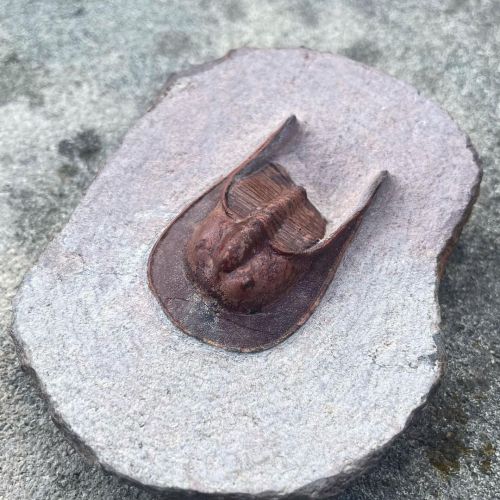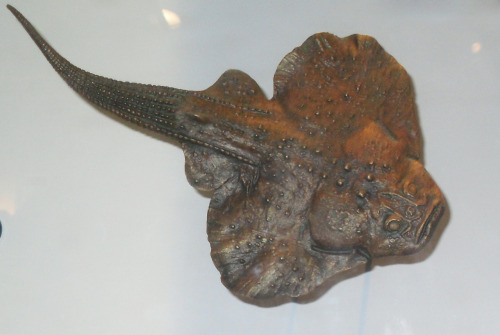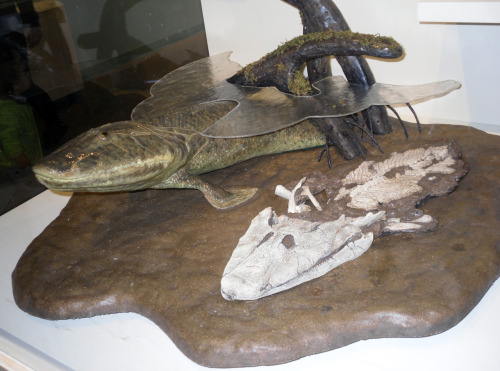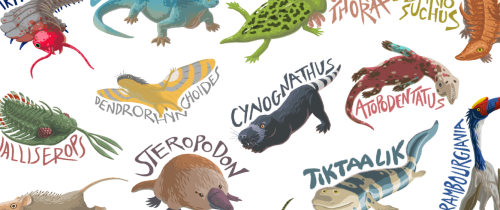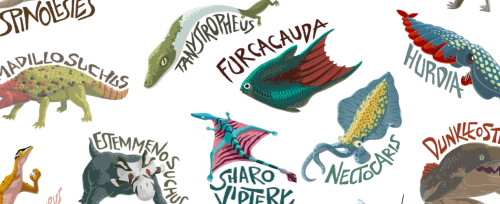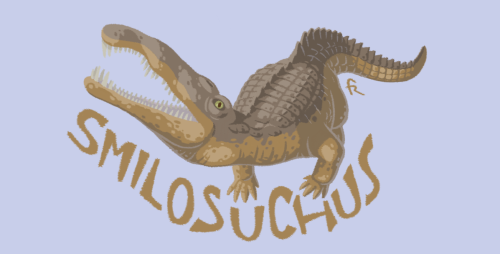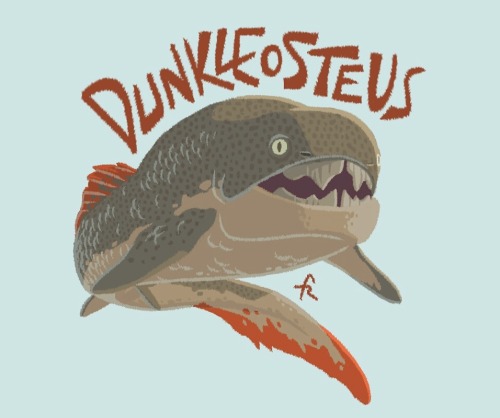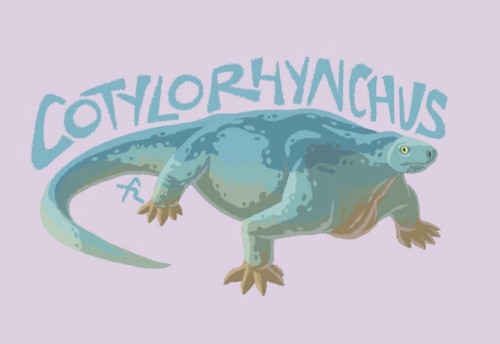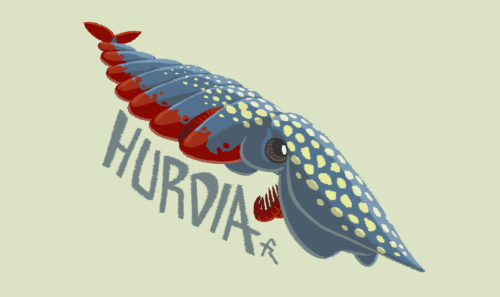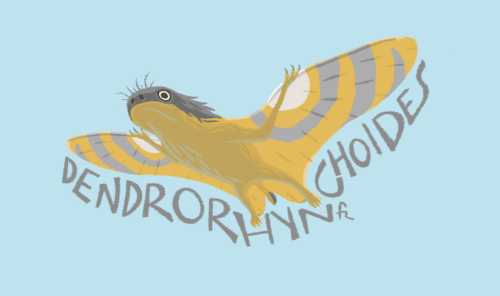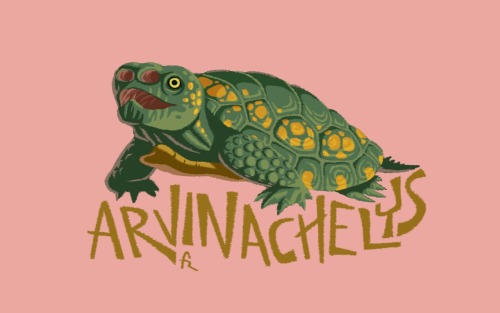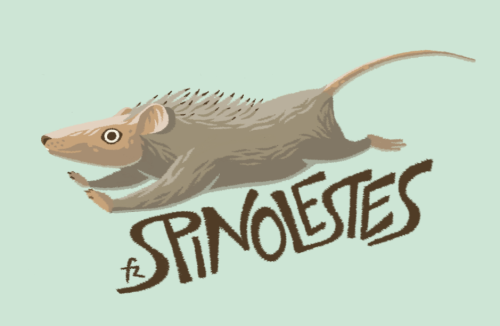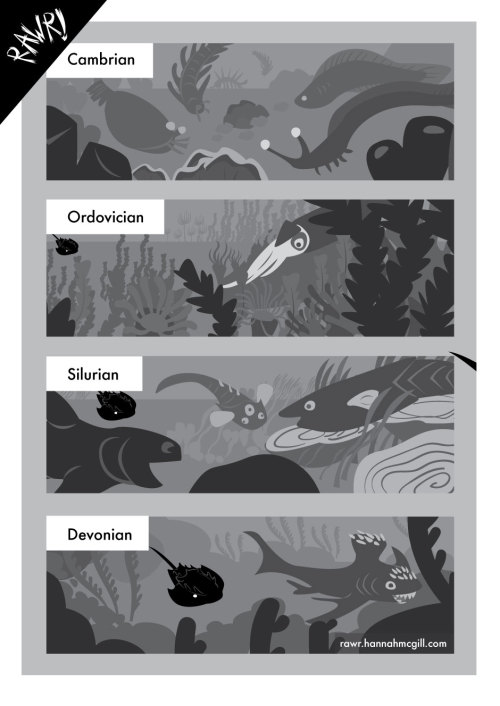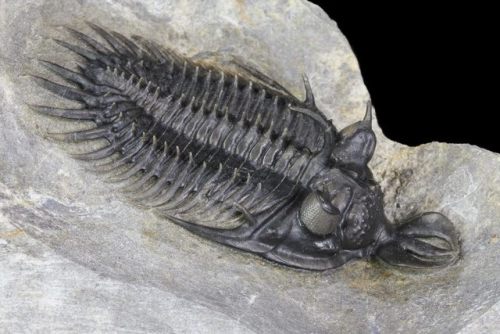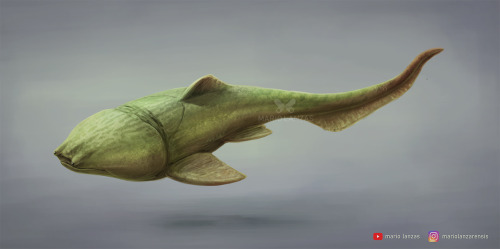#devonian
Trilobite / CAS-G 67985.01
Scientific name: Psychopyge elegans
Locality:Morocco
Age:Devonian
Department:Invertebrate Zoology & Geology, image © California Academy of Sciences
Post link
Beautiful red harpes trilobite from Morocco.
This fossil dates back to the Devonian era, being over 100 million years older than the oldest dinosaur fossils.
.
Follow @neojurassica to see more #prehistoric wonders!
.
www.neojurassica.com
Dinosaur Specialists
Genuine Fossils
⚙️ Display Customisation
Free UK Delivery
✈️ International Delivery
.
#trilobite #trilobites #fossil #fossils #fossilhunting #fossilprep #fossilfriday #extinct #extinction #evolution #devonian #jurassic #jurassicworld #neojurassica #dinosaurs #palaeontology #paleontology #geology #archeology #science #nature #naturalhistory #history #discovery #animal #prehistoricanimals #prehistory
https://www.instagram.com/p/CTH6VILNZ4I/?utm_medium=tumblr
Post link
Gemuendina
Fossil and model both on display at the American Museum of Natural History, NYC
Model created by Louis Ferraglio
When: Early Devonian (~410 to 392 million years ago)
Where: Germany
What: Gemuendina is an odd little placoderm fish. It is known only from the early Devonian of Germany, from deposits that have been reconstructed to represent areas with anoxic bottom waters. Anoxic means ‘lack of oxygen’, so there was no oxygen in the sediments where the dead or dying fish fell, and thus scavengers and decomposing organisms could not disturb the remains. Specimens of Gemuendina have only been preserved in such conditions because their armor was not a solid shield, as seen in some other placoderms, but rather a series of unfused relatively thin bony plates. This placoderm bears a close resemblance to a ray, with its flat body and series of horizontal fins. This is another excellent example of convergent evolution. Unlike rays, however, the eyes of Gemuendina were on the top of its head, not the side, and its nostrils were on top as well, not on its ventral (under) surface.
Within Placodermi Gemuendina falls into the clade Rhenanida. This group shares the characters of a ray-like body and the lose series of unfused plates that covered their flat bodies. While the ray-like body is a shared derived feature that unites the group, the seires of individual plates is likely a retained primitive feature that was also found in the first placoderms, which gave rise to all of the rest, including massive forms such as Dunkleosteus. Gemuendina is one of the earliest well-known members of the clade, but isolated plates from tens of millions of years earlier in the Silurian period may represent the true first rhenanids. Though the fossils are rare and fragmentary, rhenanids swam throughout the Devonian waters all over the world.
Post link
Tiktaalik - the fishapod
Model by Tyler Keillor and this particular set up on display at the Harvard Museum of Natural History
When: Late Devonian (~375 million years ago)
Where: Found on Ellesmere Island in Nunavut, Canada
What:Tiktaalik is a very critical specimen on the line of tetrapod evolution. In the tetrapod family tree it falls between sarcopterygians (‘lobed fin’ fish) that looked much like the living Coelacanth and more advanced tetrapods, such as Acanthostega.The discovery and announcement of Tiktaalik was very exciting, as fossils on both side of transitional period were known for a long time, but nothing really in the middle. Of course as with the discovery of any 'missing link’ now we have two more 'links missing’: one on either side of Tiktaalik ;). The most important part of the specimen is the anatomy of its forelimb - there was a well developed wrist inside the fin of Tiktaalik! Not only that, but it possibly has the first 'fingers’ seen in the tetrapod lineage. Unfortunately the back end of Tiktaalik is unknown… for now!
In life Tiktaalik would have been an aquatic animal, as its limbs could not support its weight on land - but they would have been very helpful for maneuvering the creature around the shallow waters of prehistoric Canada. Based on the spiracles - openings behind the eyes- of the skull it has been preposed Tiktaalik could have had a form of primitive lung.
If you want to know more about Tiktaalik - check out its website at: http://tiktaalik.uchicago.edu/. And for more in depth reading, I cannot recommend the book 'Your Inner Fish’, written by the discover of Tiktaalik - Neil Shubin, enough! It is a really great explanation of how Tiktaalik fits into the evolution of tetrapods and explaining homology in general! Shubin has done a fantastic job of promoting public science education using this great Tiktaalik specimen as a starting point.
Just look at all of these models getting ready to go out to museums. Maybe one is near you!

Post link
Reconstrução do placodermo gigante Titanichthys agassizi, possivelmente capaz de ter de 8 a 10 metros de comprimento.
Reconstruction of the giant placoderm Titanichthys agassizi, possibly able to reach a size between 26 and 32 feet long
Apokryltaros, 2006.
Post link

Out of the Blue: How Animals Evolved from Prehistoric Seas
Devonian period (419 to 359 mya): the age of fish! Bony fish, jawless fish, placoderms, sharks, etc.
By Elizabeth Shreeve and illustrated by Frann Preston-Gannon

Despite the caption, these are specimens of Gluteus minimus (source)
Species:G. minimus
Etymology: Presumably named for the fossils’ resemblance to butts
Age and Location: Devonian of Iowa
Classification:Eukarya: Metazoa: ?Bilateria: incertae sedis
Thousands of these fossils, also known as “horse collars,” have been collected, and every single one of them is asymmetrical in the same direction. Because most organisms are symmetrical, fossils tend to be either symmetrical or come in mirror-image pairs, so that alone makes these strange. Some invertebrates, especially mollusks, areasymmetrical, however, though even in asymmetrical mollusks different individuals are mirror images of one another.
These fossils are solid, with internal structure, so this is not the external appearance of some bivalve or brachiopod. In fact, no animal hard part ever found bears a plausibly close resemblance to these fossils. One surface has growth lines, which provides the only clear evidence of any sort of biology for whatever organism produced these. Of all the various unlikely options, perhaps the most plausible is that it is an extremely unusual gastropod shell of some kind, but the microstructure of the shell is nothing like that of a mollusk, so these remain a total mystery.
Sources:
Davis RA., Semken HA. 1975. Fossils of uncertain affinity from the Upper Devonian of Iowa. Science 187:251–254.

P. transversa from Conway Morris and Grazhdankin 2006
Species:P. salicifolia (type),P. transversa (referred)
Etymology:
Age and Location: Devonian of New York
Classification:incertae sedis
We have no idea what this one is. It’s some kind of bilaterally symmetric, frond-like, segmented…thing. It seems to have been leathery and sac-like. Beyond that, it’s a total mystery. It doesn’t have an obvious back, front, top, or bottom. Between its totally enigmatic nature and its preservation as a sandstone impression, it resembles an Ediacaran fossil, despite being a quarter billion years more recent. While similarities have been proposed to polychaete worms, the arm of a starfish, a fish’s egg case, arthropods, and other things, no explanation seems to be satisfactory.
Sources:
Conway Morris S., Grazhdankin D. 2005. Enigmatic worm-like organisms from the Upper Devonian of New York: An apparent example of Ediacaran-like preservation. Palaeontology 48:395–410.
Morris S., Grazhdankin D. 2006. A post-script to the enigmatic Protonympha (Devonian; New York): Is it an arm of the echinoderms? Palaeontology 49:1335–1338.
Cause Prehistory isn’t just about dinosaurs, I made a poster with every ‘Dinovember Without Dinosaurs’ illustrations that I’ve been drawing during last month. Hope you like it!
If you want one, you can purchase it here: http://www.redbubble.com/people/franxurio/works/18506216-dinovember-without-dinosaurs-2015?c=459839-dinovember-without-dinosaurs
And here: https://society6.com/product/dinovember-without-dinosaurs_print#1=45
Post link
Last round of my ‘Dinovember with no dinosaurs!’ POSTER COMING SOON More of my stuff in FB: https://m.facebook.com/Franxurio/ and Instagram: https://instagram.com/franxurio
Post link
Fourth round of my ‘Dinovember with no dinosaurs!’ More of my stuff in FB: https://m.facebook.com/Franxurio/ and Instagram: https://instagram.com/franxurio
Post link
My #Dinovember without dinosaurs 7-12 More on my FB page: https://www.facebook.com/Franxurio/ and Instagram instagram.com/franxurio
Post link
2.2" Walliserops Lindoei Trilobite Fossil From Issoumour, Morocco
This is a TOP QUALITY specimen (the best I’ve seen) of an rare Walliserops lindoei. It comes from the base of the El Otfal Formation near Issoumour, Morocco. This specimen is 2.2" long and the preparation was done by one of the by one of the top trilobite preparitors in the world, Hammi Ait H’ssaine who also discovered the bed this specimen came from.
Source:FossilEra.com
Wow!
Post link






#FossilFriday! Look at these beautiful fossils of VERY early land plants. They are 420 to 410 million years old (Early Devonian), when plants (along with a few animals) had just conquered the lands. These plants are small… less than 10 cm! They still had a very simple body plan, naked stems dividing a few times, no roots and rudimentary internal transport system for water.
Finding fossil plants of that era is quite exceptional. Our paleobotanist Cyrille Prestianni just documented 15 different species - of which 3 new species! – from South-Africa (the Baviaanskloof Formation). These plants give us a snapshot of what the world looked like when life on emerged lands was still at its very beginning.
These plants are so beautifully preserved, you can see the sporangia: the enclosures in which spores were formed. As if they were about to be dispersed by the wind…
before you say “aww, cute,” just remember that this is blatant pro-placoderm propaganda.
(but obviously i’m joking and this paleoartist has great ideas and is extraordinarily talented.)
HETEROSTEUS
A large fresh water placoderm of the Devonian. featured on my latest video of this period along with many other strange animals
______
Post link
DUNKLEOSTEUS
One of the largest (if not the lartgest) Placoderms we know of so far. Featured on my latestvideo on the Devonianalong with many other strange animals.
This one is also available at Redbubble for prints abd morehere
______
Post link
PANDERICHTHYS
One of the good examples of transitional animals. Featured on my latest video on the Devonianalong with many other strange animals
______
Post link
HETEROSTEUS
A large fresh water placoderm of the Devonian. featured on my latest video of this period along with many other strange animals
______
Post link
Devonian Creatures. 2017 . digital art. Mario Lanzas
They seem from another world, but they were in this one long before dinosaurs.
This piece is available for ptits, phone cases, t-shirts and other items HERE
instagram@mariolanzarensis
Post link


Two background studies I did off of random stock images, both all in one layer. First is cretaceous (Maastrichtian), second is devonian!
[ID two digitally painted images, the first is of a rocky shore with a large cliff surrounded by foliage in the background. The silhouette of 3 birds can be seen in the background and in the foreground, 3-toed dinosaur footprints line the sand and amongst the rocks on the beach is a coiled ammonite shell.
The second image is a grey and green swamp with many large-based trees coming out of still, algae-covered water. It is misty as the trees fade out into the background, and in the foreground a small orange-brown diplocaulus (a salamander-like prehistoric amphibian with a boomerang-shaprd head) swims with its back and head visible. END]




